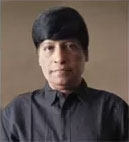
Campaigning in the digital age could well give social media an upper hand. As memes, viral videos, and digital influencers reshape Maharashtra’s political landscape, social media has become a powerful tool for parties to engage with voters. But can online campaigns truly determine electoral success, or is the ground game still key?
Election campaigns have evolved dramatically over the past decade, with social media and digital technologies becoming powerful tools for political communication. In Maharashtra, as in other parts of India, political parties have increasingly turned to platforms like Twitter, Facebook, Instagram, and WhatsApp to engage with voters. The traditional method of door-to-door campaigning, rallies, and banners is still present, but in the digital age, a tweet or a viral meme can reach millions of voters within minutes. With the Maharashtra assembly elections approaching, the question arises: is social media truly winning the elections?
The emergence of social media as a central pillar of electioneering in India can be traced back to the 2014 general elections, where the Bharatiya Janata Party (BJP) utilized social media with unprecedented skill to connect with urban and young voters. Since then, political parties across the spectrum have embraced social media as a primary tool for outreach.
In Maharashtra, political parties like the Shiv Sena (Uddhav faction), the Nationalist Congress Party (NCP), and the Congress Party are increasingly relying on digital platforms to influence voter behaviour. While regional parties initially lagged behind in adopting these tools, they have since recognized their potential and the need to connect with an electorate that is spending increasing amounts of time online.
Memes and hashtags, new political language
One of the defining features of digital campaigning in the current landscape is the use of memes and hashtags to spread political messages. Memes, in particular, have become the new political weapon. By using humour and satire, political parties are able to communicate complex ideas in a simple, shareable format. For instance, during the Maharashtra elections, memes mocking the fractured alliances and leadership struggles within the ruling Maharashtra Vikas Aghadi (MVA) coalition went viral, creating a narrative of instability that was easy to digest and propagate.
Similarly, hashtags like #MahaCrisis and #SenaVsSena trended across Twitter when the split between the Uddhav Thackeray-led Shiv Sena and the Eknath Shinde faction dominated the news cycle. These short, catchy hashtags enabled political parties and their supporters to steer conversations and shape the narrative in real time. In fact, the BJP has often been lauded for its mastery of hashtag politics, which has helped it consolidate its presence among digital natives.
For example, the BJP’s social media team aggressively pushed the hashtag #ModiAgain during the 2019 general elections. In the Maharashtra context, the party is similarly using online platforms to project stability, development, and nationalistic rhetoric to contrast with the MVA’s internal disagreements. With the electorate increasingly consuming information via digital platforms, parties that control the narrative online gain an upper hand.
Role of viral videos
In the age of short attention spans, videos have become the most effective medium for political messaging. Viral videos, whether on TikTok (before it was banned), Instagram reels, or YouTube, have proven capable of shaping voter perceptions. In Maharashtra, political parties have used video content in myriad ways—ranging from sharp attacks on opponents to glossy promotional materials.
A notable example from recent times was a video that went viral during the 2019 Maharashtra elections, featuring a satirical take on the fractured opposition, accusing them of incompetence. These videos, often shared through WhatsApp groups, have been critical in reaching voters in smaller towns and rural areas, where direct political advertisements may not be as effective. Additionally, videos by popular influencers can create a ripple effect, garnering millions of views and amplifying the campaign’s reach.
In a state like Maharashtra, where there is significant urban-rural divide, the importance of multilingual video content cannot be overstated. While English and Hindi videos dominate urban areas, Marathi-language videos reach the grassroots, often influencing rural voters. The presence of political speeches, interviews, and campaign trails on YouTube in regional languages allows parties to connect with their bases in a more authentic and direct manner.
Tech-savvy voters
One of the most fascinating developments in digital electioneering is the rise of digital influencers as political opinion shapers. Young, tech-savvy voters are increasingly consuming political information through influencers on Instagram, Twitter, and YouTube. These influencers, who often enjoy significant followings, have become conduits for political messaging, either through direct endorsements or more subtle forms of support.
In Maharashtra, regional influencers on social media have gained a significant following among the youth. These influencers often comment on politics, current affairs, and social issues, and their opinions can sway the views of their followers. For example, during the COVID-19 pandemic, certain influencers gained prominence by providing real-time updates and critiques of the government’s handling of the crisis. The influence of these digital creators has continued to grow in the political arena, with parties recognizing their ability to shape public opinion.
The BJP, in particular, has cultivated relationships with influencers, offering exclusive content, interviews, and access in exchange for support. However, the MVA has also ramped up its digital outreach, with young politicians such as Aaditya Thackeray spearheading efforts to engage with influencers and appeal to the youth vote. Aaditya’s social media presence, for instance, reflects a blend of governance and youthful appeal, and he regularly interacts with influencers who have a large following among the Marathi youth.
Misinformation and polarization
While social media has democratized political campaigning, it has also given rise to a slew of challenges, notably the spread of misinformation. In the high-stakes environment of elections, false news, doctored videos, and misleading claims can easily go viral, influencing voter behaviour. Maharashtra is no stranger to this, as the 2019 elections saw a flood of misinformation campaigns targeted at political opponents.
For example, during the campaign season, videos falsely attributing certain actions to rival parties were circulated widely on WhatsApp, a platform notorious for the spread of unverified information. While all parties have been guilty of deploying dubious digital tactics, the consequences can be severe, often polarizing voters along religious or caste lines, which are already sensitive issues in Maharashtra’s politics.
In addition to misinformation, there is the issue of online abuse and polarization. Political debates on social media frequently devolve into toxic, abusive exchanges, often fueled by paid trolls and automated bots. While this may energize the base, it also alienates moderate voters, who may be put off by the lack of civil discourse online.
A tool, not a guarantee
Social media has undeniably revolutionized election campaigns, and Maharashtra is no exception. Memes, viral videos, hashtags, and digital influencers are playing an increasingly significant role in shaping voter opinions. However, it is important to remember that social media is just one tool in a broader campaign strategy. The success of a party still depends on its ability to mobilize grassroots support, connect with voters on the ground, and offer a compelling vision for the future.
Moreover, while social media can amplify messages, it can also create echo chambers, where parties preach to the converted rather than persuade undecided voters. Ultimately, winning elections in Maharashtra will require a combination of digital savvy and traditional politicking, with the parties that master both standing the best chance of success.

A Column By
Raju Korti – Editor
The Resource 24X7
A Journalist With 4 Decades of Experience With Leading Media Houses.
